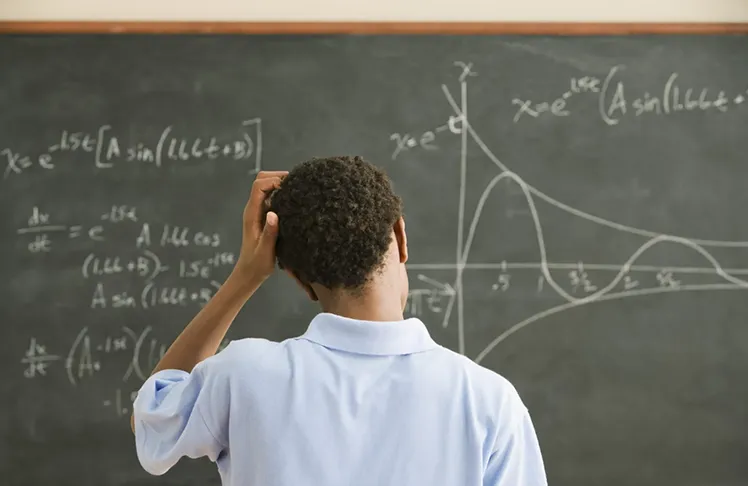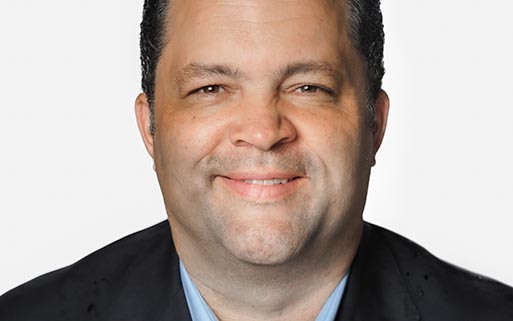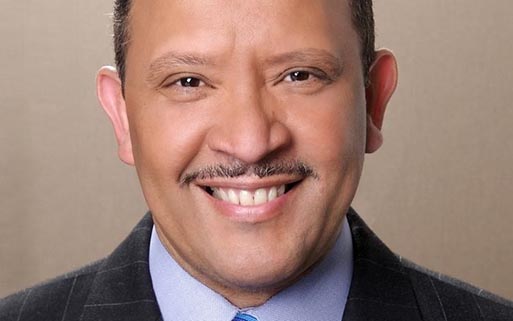

This article is one of a series of articles produced by Word in Black through support provided by the Chan Zuckerberg Initiative. Word In Black is a collaborative of 10 Black-owned media outlets across the country.
In August, the Maryland State Department of Education released the results of the 2023-2024 Maryland Comprehensive Assessment Program, which were met with disappointment and frustration in Baltimore. Despite roughly 70% of the district’s K-12 students being Black, only 10.2% were proficient in math, a slight increase from 8.8% the previous year.
While this represented some progress, some folks were forced to look at the results differently: nearly 90% of Baltimore students were still not proficient in math.
Jovani Patterson, a Baltimore resident and former 2020 Republican nominee for City Council president, has long been at the forefront of calling for accountability. In 2022, Patterson filed a lawsuit against the city’s public school system, alleging that the district failed to educate students and, in the process, misused taxpayer funds.
Today, he tells Word In Black that the root causes for this level of failure are too many to count.
“It’s a lot, and it’s enough blame to go around,” Patterson says. “You have some parents who want to be involved, but they’re being shut out of the conversation because they’re being told they don’t know how to educate their children. So parents “end up relying on teachers who are also dealing with implementing less foundational approaches to teaching.”
In 2023, the state released the results of the 2022 test, revealing that 23 Baltimore schools — including 10 high schools — had zero students proficient in math. As for the rest of the city’s schools, the overall math proficiency rate was 7%, the lowest in Maryland.
“These kids can’t do math. You’re not preparing them to buy groceries. You’re not preparing them to do accounting, to count their own money. You’re not preparing them to read contracts and negotiate salaries,” Patterson said at the time.
In a press release last month, The Maryland State Department of Education (MSDE) pointed to the significant impact of pandemic learning loss on math proficiency rates across the state. “MSDE emphasizes that ongoing efforts are in place to further support student achievement in math, particularly for historically underserved groups,” according to the press release. “Additionally, MSDE is investing in professional development to ensure educators are equipped with the necessary tools and practices to improve math outcomes statewide.”
MDSE noted that economically disadvantaged students saw notable gains, with a four percentage-point increase in proficiency, suggesting that targeted interventions are beginning to show positive results. However, proficiency levels have yet to return to pre-pandemic rates.
Nevertheless, the alarming discovery that only about 1 in 10 Baltimore public school students passed a standardized math test raised serious concerns about Black student achievement in the post-pandemic era.
A Local Problem With a National Pattern
The math proficiency struggles in Baltimore City schools reflect a widespread, nationwide crisis that disproportionately affects Black students. The 2022 National Assessment of Educational Progress results showed that only 18% of Black fourth-grade students were proficient in math, compared to more than half of white students. For eighth graders, 13% of Black students were proficient, compared to 45% of white students.
In addition, the 2022 Nation’s Report Card highlighted that the national average was further lowered by dismal performances in five key cities: Baltimore, Cleveland, Detroit, Milwaukee, and Philadelphia. In these cities, only 28% of Black students performed at or above grade level in math, a stark contrast to their White counterparts.
State standardized-test math proficiency results for Black students, particularly those in predominantly urban school districts, are worse.
The 2023 Michigan Student Test of Educational Progress showed only 7.7% of Black students in Detroit were proficient in math — despite a 5% increase from 2019. In 2022, the most recent data available shows fewer than 1 in 10 Black students in the St. Louis Public Schools District were proficient in math. Black students in Chicago had a math proficiency of a mere 8%. during the 2023-2024 school year.
Back in Maryland, the MDSE website says the MCAP measures math proficiency through four performance levels: Beginning Learner, Developing Learner, Proficient Learner, and Distinguished Learner. To be considered proficient in mathematics, students must achieve at least the Proficient Learner level or higher. These performance levels are designed to assess students’ mastery of the Maryland College and Career Ready Standards.
However, Dr. Jose Vilson, a 15-year math educator based in New York, says that standardized testing results do not always provide a full picture of a student’s understanding and undermine the development of critical thinking in math.
“I would love to see what students actually know, away from the test, and what sort of expectations and whether those things are actually good for the student,” he says. “To be honest, I don’t know if we’re really asking whether students feel like they’re learning.”

The failure to teach math to Black students effectively also has significant economic consequences. A 2019 Brookings report found that only 7% of Black students scored 600 or higher on the math portion of the SAT, compared to 31% of White students and 62% of Asian students, limiting access to higher education, especially in STEM fields where standardized test scores play a crucial role.
Pew Research data shows that while Black workers make up 11% of the U.S. workforce, they account for only 9% of the STEM workforce. In specific fields like engineering and architecture, Black representation falls to 5%, and in life and physical sciences, it’s just 6%. This disparity in math achievement reduces opportunities for Black students to enter and thrive in STEM careers, which are projected to grow by 8% by 2029.

A Failing System or Failing Schools? Who’s to Blame?
Parents, educators, school administrators, and policymakers all play roles in student achievement, making the issue of accountability complex.
Patterson says he believes that new approaches to teaching math are having a negative effect.
“Teaching curriculum that focuses on innovative and non-traditional approaches can be distracting to getting students to understand basic math skills,” he says. “These unconventional approaches feel like science experiments on our students. If they can prove that these methods can be implemented, they will claim success, but if not, it will give them a reason to request more funding. Either way, our students lose.”
A Baltimore mother of a second grader echoes this frustration.
“My daughter is smart, but she’s struggling with the way math is being taught now,” says the mother, who asked to remain anonymous to protect her child’s privacy. “It’s heartbreaking because she loves school, but she hesitates when it comes to math. I was taught math a different way. Now, they’re teaching something completely different, and when I try to help, I’m told not to intervene.”
Dr. Vilson points to the deprofessionalization of teaching as another key issue.
“We spent the last 20 years telling everybody that testing was the solution. Testing took over everything, and we lost out on what makes real education rich and meaningful,” he says. “Teachers were forced to focus on assessments rather than engaging students in learning.”
As a result, he says, Black students, in particular, “are left without a true understanding of mathematics, unable to apply these skills to real-life situations like budgeting or negotiating a salary.”
In private schools, Dr. Vilson observes, teachers often have more autonomy to explore creative approaches and connect with students in ways that public schools, constrained by testing and administrative pressures, simply cannot. This contributes to a more enriched learning environment, enabling students to grasp deeper concepts beyond memorization for tests.
A middle school math teacher in Maryland who asked to remain anonymous shares the same view based on her experience in private education: “Teaching math in private schools often involves collaboration between parents and teachers. We create individualized educational plans when students struggle, incorporating onsite tutoring and differentiated instruction.”
She also notes that while smaller class sizes and fewer behavioral disruptions in private schools allow for more direct teaching time, it’s critical for public schools to focus on the basics first.
The Baltimore City Public Schools or City Council did not respond to a request for comment.
Where Do We Go From Here?
This year marks three years since the state passed the Blueprint for Maryland’s Future, also known as the Kirwan Plan. It promises $30 billion in additional funding over the first 10 years and $4 billion annually thereafter to improve public education.
Still, the solution will require a fundamental shift in the district’s approach to education. While Maryland officials say they expect to see results from the Kirwin Plan, state test results show progress in math proficiency remains slow.
Patterson, who sued the city on behalf of taxpayers, questions if the blueprint is working.
“I just think we need to get back to the basics,” he says. “We need to get more vocal about parent participation and school choice — make learning cool again. Parents should be able to decide where they want their children to go to school if where they are currently being taught is not working for them, and parents should be able to have a say and participate more in their children’s education.”
Vilson argues that the solution lies in reimagining how math is taught and giving teachers the professional space to teach creatively.
“Students need more than just math skills. They need a curriculum that meets their social and emotional needs, as well as their academic ones,” Vilson says. “We should also ask students directly how they feel about their education. If they don’t feel connected, they’re not going to engage.”
The Maryland private math teacher also emphasizes the need for a partnership between parents, schools, and teachers. “A clear, attainable plan is necessary. Communicating this plan to parents ensures that everyone is on the same page, working together to support the students.”















